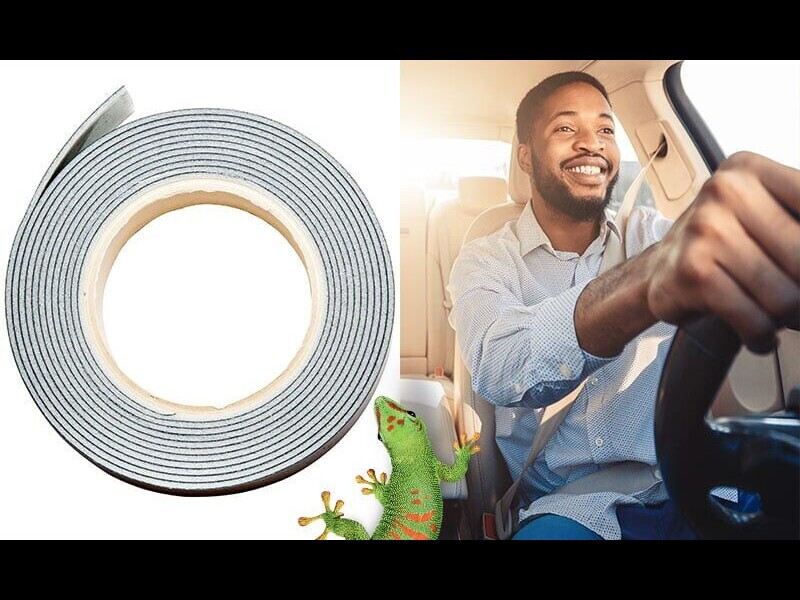
You may be looking to expand your portfolio to meet the evolving market needs and demands for tape as a quick and easy bonding method. Sound damping tape is one way to do this while helping automotive manufacturers address consumer trends.
Sound damping tape, also referred to as sound deadening, vibration damping and noise, vibration and harshness tape, can help mitigate unwanted sounds and vibrations for a better driving experience overall. However, you may not know what to consider when manufacturing sound damping tape. Your materials, application and adhesive all play an important role in determining the tape’s success. Read on to learn key performance criteria, common tape backings and items to look for when selecting a sound damping tape adhesive.
Sound Damping Tape Performance Criteria
Before manufacturing your sound damping tape, consider the characteristics the tape should exhibit to ensure strong performance in end-use. For automotive applications, your tape should be:
- Lightweight: Many vehicle brands and consumers are showing increased desire for fuel efficiency. This has caused an increased use of lightweight materials in vehicles. Your tape should add marginal weight to the vehicle to help maintain fuel efficiency standards.
- Versatile: Depending on where your tape will be placed, it should be able to bond to various substrates. Most vehicles include several types of metals, plastics and upholstery fabrics where sound damping tape could be applied.
- Durable: Since the tape will absorb frequent shocks and vibrations during use, it should be durable enough to withstand these conditions. Depending on where the tape is placed, it may also need to be resistant to water, dirt, UV rays or chemicals.
- Discreet: If your tape will be visible to the consumer, make sure it won’t detract from the vehicle’s aesthetics. You may need a backing that matches the color of the components where the tape will be applied.
Understanding how and where your tape will be used can help you determine the best backing option. Below you’ll find a list of common sound damping tape backings and how they address the criteria above.
Common Sound Damping Tape Backings
There are several types of tape backings that can help damp sound, but some types work better than others for specific applications.
- Heavy-duty polyethylene is an excellent choice for providing a lightweight yet strong barrier between two squeaking parts. It is also abrasion resistant and comes in clear or black, allowing for a discreet appearance.
- Low density polyethylene (LDPE) performs well in applications that require versatility or on components that have complex shapes. LDPE tape is useful between plastic, vinyl or fabric covered parts.
- Foam,including silicone, neoprene or PVC-based backings,can be used in gaps between mating components. Many of these foams also provide water and UV resistance, so they are durable enough to be used on exterior vehicular components.
The backing you choose will help determine the best adhesive for your tape, as these two components must be compatible to ensure the strongest possible performance. Below are items to consider when selecting your sound damping tape adhesive.
Items to Consider When Selecting a Sound Damping Tape Adhesive
Like the backing, your tape adhesive will directly impact how the tape performs in end-use. When the backing and adhesive are compatible, both components can enhance the versatility, durability and other performance criteria of your tape. Consider the following items when selecting your adhesive to ensure the best performance possible:
- Appropriate temperature range: Some vehicular components become very hot while the car is running. Alternatively, if a vehicle will be left outside in winter temperatures, metal substrates can become very cold. Make sure you choose an adhesive with an appropriate temperature range for your application to ensure the tape can withstand extreme temperatures.
- Substrate compatibility: Your adhesive must be compatible with both the backing you choose and the automotive substrate where it will be applied. Otherwise, the tape could easily fall off the vehicle’s component, or the adhesive may separate from the backing.
- Resistance to irritants: If your sound damping tape will be applied in an area that may be exposed to moisture, weather, dirt or other irritants, ensure your adhesive can resist degradation from those conditions.
- High cohesion: Since the adhesive will be in an environment with frequent vibration, it should be able to absorb shocks without deforming or losing bond strength.
Another key part of your adhesive selection is finding the right adhesive supplier. At Bostik, our team of experts can help you easily find the best option for your specific application and backing choice.
Why You Should Choose Thermogrip® 20103
Bostik’s Thermogrip 20103 is a hot melt pressure sensitive adhesive with many properties that make it an excellent choice for sound damping tape:
- Temperature Flexibility: Thermogrip 20103 has a wide application temperature range to make it easy to implement into your process. It can also maintain performance in several climates and with hot or cold machinery in its end use.
- Backing compatibility: This adhesive provides excellent adhesion to foams, so you have a range of options when selecting a foam tape backing.
- High end-use performance: This product offers strong adhesion and highly cohesive properties, making it a durable solution for a variety of environments.
- Versatile applications: Thermogrip 20103 can bond to many different substrates, including PE, PP, and PET, so it can be applied to many different areas within the vehicle.
Thermogrip 20103 can help you easily add sound damping tape to your portfolio. Contact a Bostik representative today to learn more or request a sample.
Learn more about sound damping tape with this relevant content:
